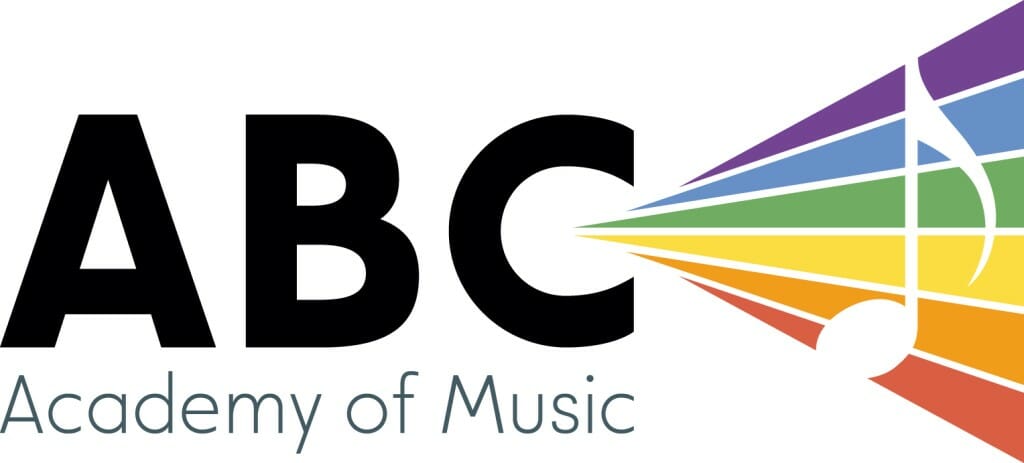Christopher Hull is a percussionist and ethnomusicologist whose work focuses on tensions between tradition and innovation in contemporary music. As a passionate performer of solo, chamber, and orchestral percussion, he seeks to ground his work in his classical training while simultaneously transcending the conventions of the conservatory. With classical percussion degrees from Wilfrid Laurier University and University of Alaska Fairbanks, a performing arts certificate from the Arts Institute of Indonesia Denpasar, and his current studies in ethnomusicology at the University of Toronto, Christopher’s genre-defying work exhibits a world of experience.
As an orchestral percussionist, he frequently works with the National Academy Orchestra of Canada, the Hamilton and Thunder Bay Symphony Orchestras, and Sinfonia Ancaster. He has appeared as a chamber musician and soloist in festivals such as Open Ears, International Gamelan Festival Munich, Young Artists Niagara, and Sacred Rhythm Jakarta, and can be heard playing drums, vibraphone, and synthesizer on commercial recordings by Call Me Moon and Treephones. He is also Associate Artistic Director of Toronto-based Evergreen Club Contemporary Gamelan, commissioning and premiering new works for Sundanese degung, and director of the University of Toronto’s Balinese gamelan ensemble, Dharma Santi.
Get to know Chris…Beyond the Bio!
Hobbies: Reading, cycling, and synthesizers
Musical influences: Jojo Mayer, Benny Greb, David Garibaldi, Gary Burton, Tony Miceli, Steve Reich, Glenn Gould, Bill Evans, I Dewa Made
Favourite food: Noodles
Least favourite food: Quiche
Favourite music: R&B, hip-hop, funk; Western modernism and minimalism; Balinese gender wayang; Sundanese degung; Orchestral; beatsce Favourite song:!
Favourite movie: The Departed
Favouirite movie music: Old modern romantic soundtracks (eg. Spellbound)
Favourite musical theatre/opera: West Side Story/Turandot
Best quote from your teacher: “When we perform, we smile. If we make a mistake while performing, we smile bigger.” -Dewa Suparta
Favourite quote: “I’m a man who leaves nothing to chance.” -Maestro Boris Brott
Favourite book: Dance, Dance, Dance by Haruki Murakami
Best thing about teaching at ABC: The lovely students
Latest Homework from CHRIS
Is Chris Your Teacher?
Sign up now to get your weekly assignments delivered, and never lose your homework sheet again!
Tuesday, March 18th
Lila
Warmups:
–8 on a Hand
–Single strokes
–Double strokes
–Paradiddles
Basic Beat Level 3.5 same as level 3, but RH plays on the Ride Cymbal
Step 1) Count “1 + 2 + 3 + 4 + ”
Step 2) Play the Hihat with your Right Hand (RH) on all the counts
Step 3) Add in the Bass Drum with your Right Foot (RF) on “1”, “2”, “3”, and “4”
Step 4) Add in the Snare Drum with your Left Hand (LH) on “2” and “4”
Visual Drumset Method: exercise 12
–great! Number 12 still needs a bit more work to be consistent and comfortable
White Stripes: Seven Nation Army
–Great job!
NEW SONG ACDC: Back in Black
–This week, practise playing the basic beat along with the song
Josh
Warm-ups:
–Learn to sing along to Teddy Bear’s Picnic. Then, play along to the melody on your snare drum while keeping the beat on your bass drum, just like you came up with in today’s lesson!
Groove Essentials Rock Groove 5
–This week, add drum fills in every fourth measure
–Practice the skill of knowing when to deploy each fill. Depending on how long they are, they’ll start on a different beat
The Beatles: Ticket To Ride
–Awesome! Let’s start thinking about a new song to learn
Myles
Drumset Musician p83 Twelve Bar Blues playalong
–See handout to help visualize the 12-bar Blues form
–Add in drum fills prior to the different segments
==Xylophone==
Warmups (Three keys):
–Scale, one octave, ascending and descending, saying the note names as you play them
–Arpeggio
–Broken thirds, ascending and descending
Cirone Book: “Step Six” ex. 5-8
Eartraining: identifying thirds and fifths
Tones and I: Dreaming
–See Worksheet in google drive PLEASE PRINT NEW VERSION
Finn
Warmups (30sec each, counting aloud):
–Single Strokes
–Double Strokes
–8 on a hand
Visual Drummer: p19 ex 16-18
NEW SONG Bon Jovi: Livin on a Prayer
–The main beat for this song alternates between Visual Drummer ex. 13 and 1. Practice getting these up to speed to play this song
–Try learning the opening drum fill by ear
Koel
Warmups (1min each):
–Triplet Ex. 130bpm***
–Sixteenth-note exercise 95bpm***
–Sixteenth-note exercise ON THE BASS DRUM goal tempo: 70bpm
—-Try adding the sixteenth-note subdivision into your metronome to help with your rhythmic precision
Tommy Igoe’s Groove Essentials: Groove 14 Slow (in google drive)
–This week, learn the main beat
–as a bonus, try learning Variations A and B
Francisco
Warmups:
–Stick Control first page ex. 14-18 (4x each, 120bpm goal tempo)
–Play eighths ca. 120-160 bpm (gradually building up the speed) using accents on the beats to help with the push-pull strokes
Tommy Igoe Groove Essentials book: Groove 1 FAST
–See the cheat sheet I made for the solo section in your google drive folder
–This week, work on building this solo up. We’ll finish this song off next week
Begin working on Groove 14 Slow (Groove Essentials) in yoru google drive
Noah
Warmups (1min each)
–Paradiddle Combo Exercise with Bass Drum on Quarter Notes (goal tempo 126)
Groove Essentials: Groove 14 Slow (in your google drive folder)
–Learn the basic groove and Variation B, try playing with RH on the hihat and then hand-to-hand sticking
Please bookmark the following links:
Your personal google drive folder
The “Frequently Used Resources” Folder
Aviva
Warmups (1min ea) goal tempo = 150bpm, playing two notes per beat (aka eighth notes)
–Single strokes (LRLR…)
–Double Strokes (LLRR…)
–Paradiddles (LRLL RLRR…)
Accent Exercises worksheet
–Work on these with a RH lead this time
–Play ex. 5-8 like fills (3 measures of beat, then exercise, followed by crash)
Drumset Musician p12, ex. 11-15
–polish these off for next week
–feel free to go on to the following page
Groove 1 FAST
–Try playing along to this MUCH faster track using a quarter-note cymbal pattern (use the starred examples from your folder)
Groove 2 Slow (chart and track in your personal folder)
–Learn the main groove and variations for next week
–Ignore the left-food hihat “chicks” for now, we can add those in later
Hole: Celebrity Skin
–Work on flowing through the intro section (false start)
–Correct the rhythm on snare in beat 2s of the Chorus groove
–Learn and build up the speed of the Chorus fill (bottom of handout)
Saturday, June 7th
Jack
We spent more time on the Back in Black fill, and Jack also got creative with creating a 8 beat rock beat to go with Back in Black! Some compositional genius! We will try to play it with the song at a slower speed!
Nova
We worked on sight reading Hunter Chorus today! Nova remembers music very fast, and could be helpful but harmful when comes to sight reading! Harmful in the sense that it’s easy for her to get lazy and stop reading what is exactly on the page, but helpful because classical music or pop song often repeat itself over phrases. When sight reading, especially now that Nova is new to this skill, identifying several things help: any upward or downward stepwise motion (that way you can relate back to scales you have practised in the past), where are the top and bottom notes and any leaps (could it be derived from arpeggios of the chords in the harmony). We will be doing more of these exercises going forward!
Aleksander
We played through Livin on a Prayer twice with the track! Very proud of your progress with the song! Especially want to make a note on your method of practising. Using metronome, practising at concert speed AND the faster speed were all great ideas to practise your song and getting it performance ready!
Several things to note: to make it easier to reach the crash and the ride back to back, position your arm in the middle of the set, looser wrist and allow the sticks the rebound between the two surfaces! As for hihat, when you are playing repeating 8th/16th notes, put a slight accent on every beat using the push pull motion, that helps locking yourself to the groove!
We will choose a Green Day song to play next week!
Jonah
We worked on sight reading Hunter Chorus today! Jonah remembers music very fast, and could be helpful but harmful when comes to sight reading! Harmful in the sense that it’s easy for him to get lazy and stop reading what is exactly on the page, but helpful because classical music or pop song often repeat itself over phrases. When sight reading, especially now that Jonah is new to this skill, identifying several things help: any upward or downward stepwise motion (that way you can relate back to scales you have practised in the past), where are the top and bottom notes and any leaps (could it be derived from arpeggios of the chords in the harmony). We will be doing more of these exercises going forward!
Let‘s also continue working on the worship song!
Jared
We read through a good chunk of Silhouettes today. Great job going through several tricky licks especially the few involving open close hihats (very common in Japanese anime songs!) For the 16th notes on Hihat, practise throwing the 16th notes in group of four. Loose wrist and accenting first of each grouping helps! Afterwards add in the bass drum groove! Since the song is so fast, try to feel the pulse in bigger groupings.
Mario
Since we revised the same passage, I would like to remind you about this tip. Though it might seem like every section has a different 16 notes lick, its actually always the same rhythm (1 na), except every time its assigned to different instruments, sometimes cymbal sometimes kick. When in doubt, listen to the recording I made and re familiarise yourself with the 1 na rhythm played on hihat and snare (see fourth bar of chorus on first page) THEN relate that to the lick that you have trouble with. If the rhythm sounds similar, you are more or less on the right track :)
You are grasping the rhythm better and better, just sometimes crushing it. Our two slogans are “One little, two little” and “running for my life” (from wrecking ball) You Got this!!
Preferred Books for TCHRNAME Students
Click to buy them here, and they’ll come right to your house! What could be easier?
BOOK TITLE
COMING SOON
BOOK TITLE
COMING SOON
BOOK TITLE
COMING SOON
BOOK TITLE
COMING SOON




